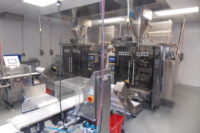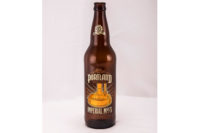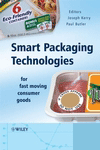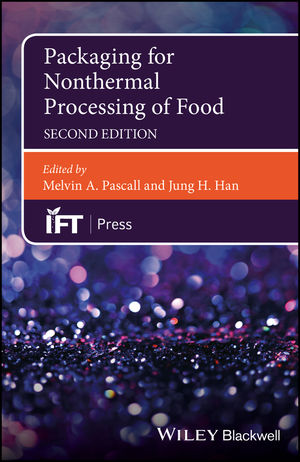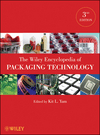Packaging for confectionery and baked goods: low-cost and eco-friendly persuasion










Energy and raw materials are becoming more expensive, and consumers want to do more for the environment. This is forcing manufacturers of sweets and snacks to make difficult adjustments: their products have to stand out from the crowd without extravagant packages that drive up costs. Packaging producers and machinery manufacturers can help – with material-saving packaging solutions and more efficient production lines.
“Halloren Kugeln” chocolates have been a longstanding favorite on the confectionery shelves, and without much publicity. A big-selling product for over 60 years, these chocolates have repeatedly given the Halloren chocolate factory in Germany outstanding business figures. In 2013, the company aims to pass the Euro 100 million sales mark for the first time after about Euro 90 million in 2012. “Since privatization in 1992, we’ve managed to hold our own on the market without neglecting our roots and what we do best,” says CEO Klaus Lellé.
But the CEO of Halloren does not want to rely solely on popularity and tradition. To stay successful, Klaus Lellé decided to give the image of the “Kugeln” an “all-round facelift” last year. The package boxes for the 16 different flavors are now based on a strategy with uniform corporate design elements. In addition, the company’s own snack brand Choc’n Snack is now being sold in stand-up pouches – this way they are more eye-catching in the stores and are also re-sealable.
Anyone who wants to hold their own on the market for confectionery and snacks against the likes of Nestlé and Kraft Foods has to present their goods well at the point of sale. The range of sweets and snacks has become enormous: nougat with salted butter, saffron butter biscuits and marshmallow sticks with orange blossom flavoring and chocolate coating are just some of the new products that manufacturers are flooding the shelves with. “In a highly competitive environment, companies want to win market shares with a constant stream of new products,” says Torben Erbrath, Spokesman of the Association of the German Confectionery Industry. The package is the key to the purchase. It not only has to protect the product’s delicate contents, but also catch the eye. This calls for exceptional creativity from packaging designers: showy colors and shapes are just as important as effective consumer marketing.
Waste of space
However, some manufacturers of confectionery and baked goods tend to overdo it. Companies misleading customers with fraudulently oversized packages have received repeated criticism. A survey by the North Rhine-Westphalian (NRW) Consumers Association (Germany) revealed that biscuit and snack packages contained an average of 40% empty space. Such deception is not only illegal, but also pointless. Many consumers feel cheated by the purchased products, says Klaus Müller, Board Member of the NRW Consumers Association. There are also environmental arguments against XXL packages. Wasting resources has a negative impact on the environment and damages our climate – something that consumers are well aware of.
Inflated packages are also counterproductive for economic reasons. Confectionery and baked goods manufacturers are facing massive pressure on costs, as energy and packaging materials on the one hand and raw materials like milk, cocoa and sugar on the other are becoming more expensive. For instance, the spot price for cocoa butter, which is used in the production of chocolate bars, increased by 80% to $ 8,000 per ton in 2013 – and this puts a squeeze on profit margins.
To avoid putting off environmentally aware consumers and to offset cost increases, companies have only one choice: they have to restrain themselves with the packaging and manufacture their products more efficiently. Halloren is leading here by example, as the chocolate manufacturer’s new packages make their mark without elaborate design and extra frills. Other manufacturers also seem to be rethinking their strategies. Some are resorting to material downsizing, giving preference to packaging materials that are easier to recycle and that conserve resources by being thinner. “On the packaging market a number of trends can be identified. Sustainability is one of these megatrends,” says Ralf Weidenhammer, Head of the Weidehammer packaging company. Among other things, Weidenhammer produces readily recyclable composite cans for confectionery and savory snacks. With its cardboard cans, the company has helped brands like Knack & Back and Pringles to achieve greater popularity, enabling them to find the right balance between extravagance and efficiency. A resource-conserving lightweight, the Pringles can promises freshness and fun.
Scientists are meanwhile searching for alternative methods that are even greener and cheaper. A sustainable alternative to transparent multi-layer films, as also employed in Weidenhammer’s composite can, has recently been developed by the Fraunhofer Institute for Process Engineering and Packaging – in the form of a film coating made of whey. In the “Wheylayer” project funded by the European Union, the researchers make use of whey protein instead of oil-based plastics. The practical thing about it is that the substances naturally occurring in whey extend foods’ shelf life. What is more, unlike oil, whey is available in unlimited quantities and is also biodegradable.
At the interpack (interpack.com) 2014 trade fair from May 8 - 14 in Düsseldorf, Germany, many more packaging innovations for confectionery and baked goods will be on display. Over 1,000 of the approximately 2,700 expected exhibitors have named the confectionery industry as the target group for their products and services – the items showcased will be correspondingly varied. Machinery manufacturers will also be present with many new developments. “Their focus is on boosting efficiency, because every tenth of a cent counts in the production of confectionery today,” explains Beatrix Fraese of the Food Processing and Packaging Machinery Association within the German Engineering Federation (VDMA).
Making production more efficient
According to Beatrix Fraese, there is still plenty of potential for boosting efficiency in confectionery production: “A significant proportion of the machine park is outdated.” This opinion is backed by the results of a current survey by Swiss plant manufacturer Bühler. According to this survey, the chocolate industry spends Euro 200 million per year worldwide on the cleaning, roasting, sterilizing, cracking and grinding of cocoa beans. With its so called energy audit and its new shell burning technology, Bühler promises savings of up to 65%. During the free energy audit, Bühler engineers track down energy leaks in the cocoa production process. The new combustion system makes use of the energy derived from the shells for the roasting and sterilization operations, instead of treating the shells as waste – so no expensive energy has to be bought in for heating. “The combination of the audit and new technology heralds a new energy drive that will dramatically change the future,” says Bühler Product Manager Thomas Bischof.
Bühler’s Danish competitor Aasted has developed a new temperature control system for chocolate called SupaNova Quick Shift. To achieve a smooth melt-in-the-mouth consistency, each chocolate has to be carefully heated several times so that the crystals in the mixture dissolve. In the new Quick Shift, a special warm water system makes it possible to control crystallization with greater precision – thus accelerating production. In addition, the stirrer in the Aasted unit is detachable. The machine is therefore easier to maintain, which improves its availability.
Cutting labor costs and extending machinery operating times – these are also the goals of Walterwerk, a manufacturer of industrial baking ovens in Germany. At interpack 2014, the company will present its Jupiter IC, a new generation of sweet wafer and snack production lines that produce wafers faster than existing systems, says Markus Bartels, Head of Technical Marketing. Jupiter IC produces more than five wafers per second, while its predecessors managed only four. Furthermore, the company has designed the new production line so that it requires less maintenance – another way of reducing costs.
The next generation of machines is already in the development phase at Walterwerk. “We’re working on making our systems even more user-friendly and versatile,” explains Markus Bartels. This is necessary because growing product diversity is imposing tougher requirements on production systems. “With today’s frequent product changes and shorter product life cycles, they have to be more flexible and easier to modify,” states Markus Bartels.
With their numerous innovations, packaging producers and machinery manufacturers have adjusted to the new requirements in the confectionery and baked goods sector. Manufacturers willing to invest have plenty to choose from among all the new packaging and more efficient machine solutions. At the upcoming interpack trade fair, they can experience it for themselves.
Looking for a reprint of this article?
From high-res PDFs to custom plaques, order your copy today!




